4 Questions that Must Be Asked Before Designing a New Website

Most websites are doomed to failure from the very start due to one simple mistake, and it happens way too often. They are built for the wrong audience.
It's all too common for a business owner to behave as if their company's website is for them. Worse, there are all too many Web designers and agencies who are complicit in perpetuating this behavior.
What the business owner, designer and agency all fail to recognize is that a website is not an exercise in vanity. Its main purpose is not to impress site visitors by being creative.
A business website is a tool prospects use to find a solution to their problem. Consumers are not arriving at business websites so they can be entertained. Their goal is not to be amazed or impressed. Their purpose is to find a solution that will satisfy their burden.
Or, to put it another way, consumers have problems and they are looking for solutions. A website that concentrates on its own appearance and goals, above the consumer's problem, is not presenting solutions any consumer will find relevant.

The Bad News
If business needs come before consumer needs then the design, content, targeting and overall goal strategy are negatively affected.
The website design will be tailored to the business owner's and designer's preferences, not the prospect. The messaging and brand voice will be a dictation of what the business thinks is important and not what the prospect is looking for or cares about. The user intent will be misunderstood so the call-to-action and overall goal strategy for the website will entirely miss their mark.
It would be like hiring a caterer to provide their services and the caterer never asking the most basic questions about who will be eating their food. One could imagine what would be delivered when the number of guest, dietary restrictions, menu request and overall theme were left to the blind assumptions of the caterer.
Sounds ridiculous, but it is exactly what is happening when a website ignores its core audience.
That's the bad news.
The Good News
It is easy to set up a website for success when it's being built on the proper foundation. To do so, one simply needs to identify the who, what, how and why of the audience.
- Who is the website being built for?
- What are their problems they are trying to solve?
- How do they arrive to the website?
- Why are they there and what are they hoping to find?
Identify who the website is for
It's a bit simplistic, which is why it's so easily missed.
At its core, a website is a communication tool. It's a place where a website owner can communicate ideas, products and services to site visitors. The success or failure of the communication is determined by the message's level of relevance.
When a website ignores the consumer and is built off the website owner's vision, then everything about the consumer becomes secondary, if not completely ignored. The question, "Who am I trying to talk to?" is never asked.
This is fine for something like a personal blog, but for a business, it is detrimental to the website's success.
A message can only be relevant when the speaker understands who they are talking to and what the audience cares about.
Even the seemingly one-sided nature of radio is an example of knowing the audience. A station manager for an easy listening station would never air a Slayer track, even if it is his personal preference. The audience doesn't care about the station manager's musical taste, they care about theirs, and that's why they're on the easy listening station.
A website is the same, it must recognize who the audience is. Then, and only then, can the website begin to cater to the audience.
Recognize what problem the prospect is trying to solve
Knowing who the website is being built for is the key first step, but it's not enough on its own. There's also the why. Why does the target audience need the website?
Why is the target audience, the consumer, online in the first place? What is happening in their life that has caused them to go on the hunt for a solution? What's driving them?
When the audience is identified and their motivation is properly understood, then the most dangerous obstacle to any website has been successfully passed. The website can now be helpful instead of braggadocious. Instead of talking about how great the business is, the website can begin to talk about how great the consumer can be.
The next two questions are two fold much like the first two.
Address the context of the site visitor
Once the audience has been identified and their motivators are understood, it is then necessary to understand the context in which they arrive to the website.
What keywords does the website show up for when consumers are searching for answers to their problem? What pages of the website show up for what keywords? What is the user intent for each keyword? Are users arriving organically or through paid channels?
Some consumers will arrive using a certain set of keywords and enter the website through specific landing pages that will differ from others.
Some website visitors will be ready to buy. Others will be unaware of what solutions even exist for their problem. This is known as the buyer's journey and it's a dilemma every website must address if it's going to communicate, sell, effectively.
Saying the right thing at the wrong time will make a relevant message irrelevant.
Provide the information the prospect needs
Finally, once the who, what and how have been identified, a relevant engaging user experience can be built.
The motivated buyers can be presented with content that guides them to a conversion. The discovery stage consumers can be presented messaging that captures and graduates them further along the buyer's journey.
The website's structure, design, and content can be tailored to be exactly what the consumer want and needs.
Tie it All Together
- Knowing the who gives the website an audience to address.
- Knowing what the audience cares about gives the website a purpose.
- Knowing how the audience arrives gives the website the context.
- Purpose and context gives any website the ability to be built in a personal and relevant way.
If a website ignores its audience, it doesn't know who it's talking to and it doesn't know what to say. It doesn't know what is important to the consumer, and worse, it doesn't care.
With a foundation like that, how could any website be expected to perform?
"You hit what you aim at, and if you aim at nothing you will hit it every time." - Zig Ziglar
 About the Author
About the Author
Daniel Davidson has over six years experience in SaaS B2B creative direction and 15-plus years designing for clients. He is the founder and creative director of By Dan Design Co. - A Web design company based in Colorado. He writes all across the Web about design, UX strategies, B2B marketing and how it all fits together. If he's not writing or pushing pixels, he's most likely ideating on a new marketing scheme.

Subscribe to Our Newsletter!
Latest in Web Design









